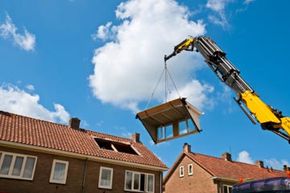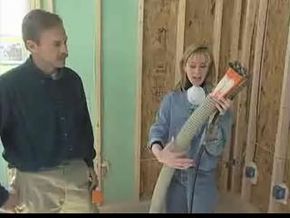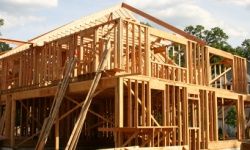It's 6 a.m. on a Saturday, and you're jolted awake by the soothing sounds of a jackhammer for the seventh week in a row. It's nice that they're finally building a house on the old lot next door, but not at the cost of your beauty sleep. If that was a prefab house, however, you'd still be snoozing: Instead of weeks on end of sawing and nail guns, your new neighbors' home could only take a few days to put together.
What's prefab? Well, you're probably used to the idea of your cars, appliances and household gadgets being mass-produced in factories. But what about your house?
Advertisement
Prefabricated (prefab) homes are homes manufactured either partly or completely in a factory, often miles away from where they'll end up, then assembled on site. Companies premake everything from roofs to kitchens to entire buildings in standard sizes that can easily be put together whenever and wherever they're needed [source: Vanderbilt]. They're just like the dollhouses you might find in a toy store, but human-sized and usually not quite as pink.
Prefab homes may sound new-fangled, but they've actually been around since the 17th century. However, they didn't truly take off until the early 1900s, when The Aladdin Company began selling house kits, which are just what they sound like: sets of parts and instructions that frugal and enterprising homeowners can use to build their own dwellings.
As of 2011, there were about 46,000 prefabricated homes in America as compared to the roughly 130.5 million conventional, or architect-designed, homes [source: U.S. Census]. We'll do the math: That's only about 0.03 percent of homes in the United States that were built in factories [source: U.S. Census].
In other countries, though, that percentage is much higher. If you've ever admired the clean lines and ambitious do-it-yourself spirit of IKEA furniture, it shouldn't come as much of a shock that as of 2008, 70 percent of all housing in Sweden (IKEA's birthplace) was prefabricated. Not surprisingly, IKEA features its own line of homes (the BoKlok line) as well.
If the thought of putting together an entire home the way you'd construct IKEA furniture sounds pretty daunting, you're perfectly justified -- it's a lot of work. However, the relatively low cost of prefab homes, among other perks that we'll discuss on the next page, is a major draw for many would-be homeowners.
Advertisement



